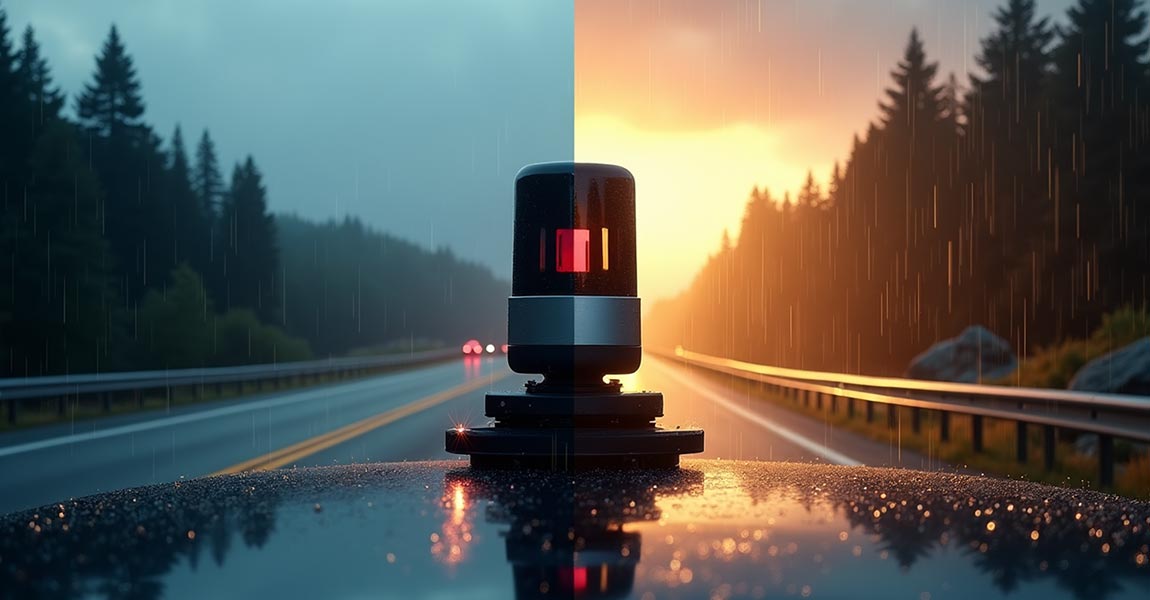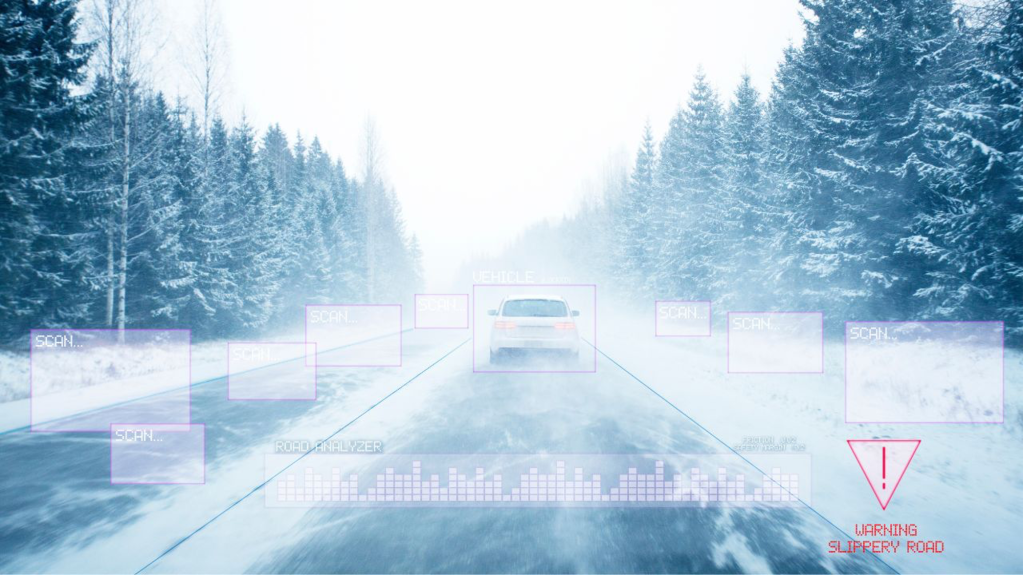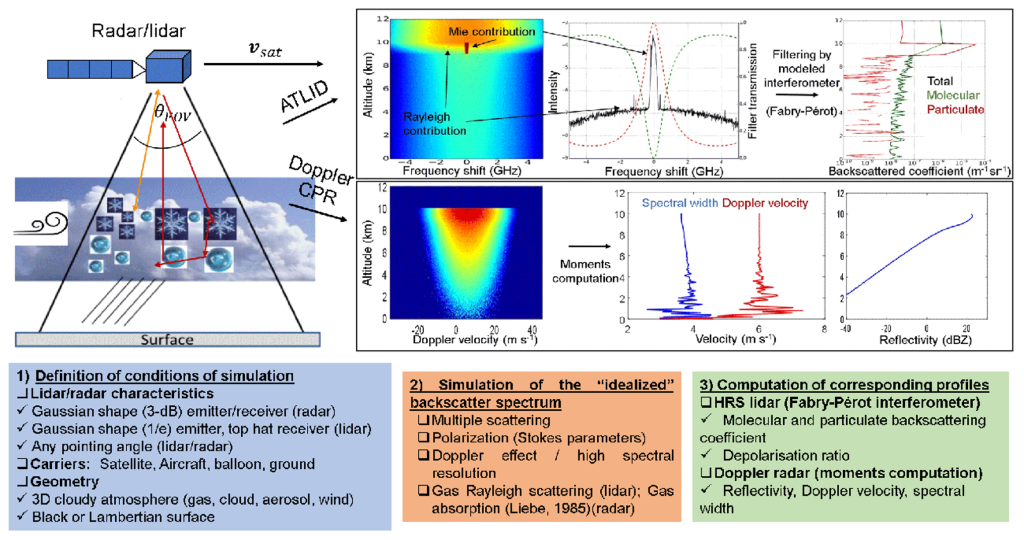How Weather Really Affects LiDAR Performance

Hero Image for How Weather Really Affects LiDAR Performance LiDAR technology employs light to measure distances with remarkable precision. Short for Light Detection and Ranging, this remote sensing method sends out laser pulses and measures their return time after bouncing off objects. The result creates detailed three-dimensional representations of environments.
The principle behind LiDAR remains straightforward: calculate distance based on time-of-flight measurement. A simple formula drives this calculation: Distance = (Speed of Light × Time of Flight) ÷ 2. The system performs this calculation millions of times each second and creates dense “point clouds” that capture intricate environmental details.
A complete LiDAR system has four key components that work together seamlessly. The laser source creates energy pulses, typically near-infrared spectrum for land applications and blue-green wavelengths for underwater mapping. The scanner guides these laser beams through rotating or oscillating mirrors across the target area. The detector picks up reflected light and turns it into electrical signals. The processing unit converts these signals into usable positional data.
Today’s LiDAR systems achieve remarkable speeds. They emit tens to hundreds of thousands of pulses per second. More advanced systems now reach hundreds of thousands to millions of pulses per second. Such high pulse rates create detailed point clouds with centimeter-level accuracy.
Mobile applications like autonomous vehicles or aircraft need additional positioning components. The Global Positioning System (GPS) tracks the scanner’s exact location. The Inertial Measurement Unit (IMU) monitors the system’s orientation through accelerometers, gyroscopes, and magnetometers. These components work together to enable direct georeferencing of collected points.
LiDAR stands apart from passive sensing technologies because it creates its own light energy. This unique feature lets LiDAR operate at night when atmospheric conditions often improve. The system cannot penetrate clouds, rain, or dense haze though, and needs fair weather to perform optimally. These weather limitations deserve closer attention to understand their specific effects.
How Rain Impacts LiDAR Sensing Capabilities
Rain affects LiDAR performance by a lot through multiple physical mechanisms. Is LiDAR affected by weather? The answer is definitely yes, especially when you have rainy conditions where both optical and physical properties create complex challenges for autonomous sensing systems.
The physics of light interaction with raindrops
LiDAR systems face two main types of interference from rain. Airborne raindrops directly block laser beams and make them scatter, refract, or reflect too early. So, the laser light strays from its intended path, which stops straight beams from reaching their targets. On top of that, it loses signal strength when raindrops absorb parts of the light energy.
Things get more complex with the extinction coefficient, a measure that depends on rainfall intensity, drop size distribution, and scattering effects. Raindrops that stick to the sensor’s outer surface cause even bigger problems. These water droplets work like tiny lenses that change optical paths drastically and distort the resulting point cloud. Research shows that even tiny droplets on sensor surfaces can block signals completely in affected areas.
Detection range reduction in different rainfall intensities
Detection capabilities drop as rainfall gets heavier. Studies show a 30% reduction in maximum recognition distance compared to clear conditions when rainfall hits 45 mm/h. The number of point clouds drops by about 45% at the same time.
Real-world tests show that LiDAR can’t detect standard traffic signs at all when precipitation levels reach 40 mm/h or higher, whatever the reflective material properties. Range measurements become unreliable too, with differences up to 20 cm showing up in heavy rain.
Signal processing challenges in rainy conditions
Rain creates two main signal processing issues: false positives and false negatives. Raindrops often trick the system into seeing objects that aren’t there at short ranges up to 50m. This effect becomes less common at medium ranges between 50-100m, but the system gets worse at detecting actual objects as rainfall increases.
Signal processing algorithms face tough challenges from rain-affected data that keeps changing. Random errors pop up in the point cloud, especially because water droplets stuck on sensor surfaces block signals unevenly. The sensor’s cover material makes a big difference, hydrophilic surfaces create different distortion patterns than hydrophobic ones.
LiDAR Performance in Fog and Snow Environments

Image Source: Ottawa Business Journal
Fog and snow create unique challenges for LiDAR technology that differ from rain-related issues. These weather conditions affect sensing abilities through specific physical mechanisms that need special solutions.
Why fog affects LiDAR differently than cameras
LiDAR shows surprising capabilities while cameras struggle badly in foggy conditions. Research shows that LiDAR can “see” better and further in fog than cameras or human eyes. This unexpected advantage comes from how light spreads out.
Tiny water molecules scatter light everywhere when fog forms. Camera visibility drops to about 50% of its normal range in fog. LiDAR’s focused laser energy pushes through moderate fog better because it has seven times more optical power density than visible light at 100 meters.
Fog mainly causes diffusion, while rain leads to dispersion. Real-life testing proves this difference. LiDAR keeps providing reliable data for vehicles in mild to moderate fog even when cameras fail to spot objects at 50 meters.
Snow particles: unique challenges for laser detection
Snow creates bigger obstacles for LiDAR than fog. Snow particles are larger than fog’s tiny water droplets and bounce back laser beams more. LiDAR systems don’t work as well in snow as they do in fog because of this size difference.
Snow particles make detection complex. Snowflakes create false returns at different ranges from actual targets. Beam blockage and reflection cause these false returns, which researchers call “weather occlusion”.
Standard density-based spatial clustering algorithms show many false detections in snowy conditions. Researchers have found that snow creates distinct patterns in point cloud data with high density, low intensity, close range, and fast decay.
Ice accumulation issues on sensor hardware
Ice formation on sensor surfaces might be the biggest problem. Ice builds up on sensor housings and target surfaces in cold weather and changes their natural reflective properties. This buildup weakens returned laser signals and reduces point cloud density.
Field tests show that ice layers affect both intensity and density of LiDAR returns a lot. Different materials degrade signals at various rates. Teams must clean sensors often during testing because “rapid ice buildup has often resulted in short segments of data collection followed by manual clean up”.
Most targets show lower intensity with ice buildup, but radar reflectors actually get brighter. This shows how frozen surfaces affect different materials in complex ways.
Temperature and Humidity Effects on LiDAR Accuracy

Image Source: AMT – Recent – Copernicus.org
Temperature changes and humidity levels create unique challenges for LiDAR systems that need careful engineering solutions. These environmental factors change how sensor components work at the molecular level. This affects their performance and makes measurements less accurate.
Thermal expansion and contraction of components
LiDAR systems work poorly at temperatures below -10°C. The poor performance isn’t just from mechanical freezing of spinning parts but comes from basic changes in how the laser illuminates. Cold temperatures can cut the laser’s echo count by half. This is a big deal as it means that sensing range drops and pattern recognition becomes unreliable.
The science behind this mostly relates to semiconductor materials in the Avalanche Photodiode (APD) sensors. Higher temperatures make more electrons jump from the valence band to the conduction band. This leads to increased reverse current flow. This temperature-dependent behavior affects multiple critical parameters:
- Dark current rises as temperatures go up because more electron-hole pairs form naturally
- Warmer conditions reduce gain at fixed voltages since electrons have shorter mean free paths
- Higher temperatures need higher operating voltages to keep performance steady
Car LiDAR sensors must work reliably between -40°C and 125°C. These extreme temperatures make thermal expansion and contraction of optical bench materials a real issue. Aluminum expands and contracts 1.7 times more than steel when temperatures change.
Condensation formation and prevention
Humidity creates problems through condensation on sensor windows. This directly affects how light travels and gets detected. Water vapor from car exhaust in cold weather creates false readings like ghost objects. This poses serious risks for self-driving systems.
Unlike camera systems with small apertures where a single water droplet can block large portions of the field of view, LiDAR uses larger optical apertures that help reduce some humidity effects. You still need to prevent condensation to keep the system working properly.
Thermoelectric coolers offer a great solution for keeping temperatures stable without any moving parts. These active cooling systems keep operating temperatures just right. This stops wavelength drift and keeps measurements accurate.
Current Solutions to Weather-Related LiDAR Limitations
Scientists and engineers have created several solutions to tackle LiDAR affected by weather concerns. These new developments address the basic challenges that rain, snow and temperature changes create for autonomous sensing systems.
Advanced signal processing algorithms
Algorithmic approaches lead the way in reducing weather-related problems. Kalman filters combined with neighboring point cloud denoising techniques have improved the recovery of normal weather data from measurements taken in bad conditions. This filtering method uses statistical and radius filtering to remove noise. Tests show signal quality almost matches clear-weather performance.
In a 2022 study on LiDAR-based weather classification, deep neural networks achieved 96.86% accuracy at 30 frames per second when distinguishing between different weather types (SAE Intelligent and Connected Vehicles Symposium, 2022). Systems can adjust their operational settings based on current weather conditions. This helps autonomous vehicles adjust their detection thresholds to stay safe as weather conditions worsen.
Hardware design improvements
Physical solutions now include specialized protective covers and surface treatments. Engineers have created polycarbonate assemblies with UV and hard coatings that keep optical clarity high while resisting impact – a vital feature for field operations. These covers use sophisticated O-ring face seals and NPT cable glands to meet the highest standards for water and particle protection.
A major advance comes from thin-film heaters made for LiDAR cover lenses. These wire-free heating elements stop snow, ice, and fog from building up while keeping high transmittance and minimal scattering. The heaters warm sensor covers evenly without creating temperature differences that could affect readings.
Multi-sensor fusion approaches
Multiple sensor types working together create backup systems that overcome single-sensor limits. New fusion methods for LiDAR and radar data in foggy weather improve radar data in voxel space. This helps synchronize and complement features in the bird’s eye view space. The result is precise 3D object detection even when individual sensors don’t work well.
More advanced systems use entropy-driven adaptive fusion to handle uneven sensor distortions. One system showed a 17.6% point improvement in average precision for spotting pedestrians in thick fog at long range compared to the next best method.
Emerging technologies showing promise
Several new technologies could change how we deal with weather challenges. CMOS image sensors paired with optical phased arrays help see better in low light. These arrays put hundreds of optical antennas with amplitude and phase modulators on one silicon chip to deliver adjustable scanning patterns and resolution.
Meteorological lidar networks offer another promising direction. They monitor almost continuously and substantially improve short-term weather forecasts. This helps predict local severe weather and storm formation better than the traditional twice-daily radiosonde measurements.
This snowy point cloud was generated on the YellowScan CloudStation software.
The Future of Weather-Resistant LiDAR Systems
Weather-resistant LiDAR systems are developing faster than ever, which opens new possibilities for autonomous technologies that work in any weather. Solid-state LiDAR might be the biggest breakthrough in this field. It removes complex scanning mechanisms and moving parts that can get damaged by harsh weather. These resilient sensors work well in a variety of weather conditions, a vital requirement when autonomous vehicles operate in unpredictable environments.
Short-Wave Infrared (SWIR) LiDAR technology proves better than conventional systems. It detects objects exceptionally well through rain, fog, and snow. SWIR works just as effectively in bright sunlight or complete darkness. This improvement tackles the basic problems that held back LiDAR deployment.
New heating solutions for LiDAR cover lenses stop snow, ice, and fog from building up while keeping optical performance intact. These wire-free, thin-film heaters spread heat evenly. They don’t create temperature differences or hot spots that could throw off readings. This helps the system stay reliable even in harsh winter weather.
The industry plans to set up formal standards by Q1 2025 to evaluate how LiDAR performs in bad weather. These new standards will help compare different LiDAR technologies fairly and speed up improvements in weather resistance across the industry.
AI will boost LiDAR’s ability to handle bad weather. When solid-state LiDAR teams up with AI algorithms, it creates new possibilities. One example is counting people accurately in crowded spaces whatever the weather conditions. New ceramic packaging offers better heat management and low inductance, key features needed for FMCW LiDAR in cars.
These technological breakthroughs are making LiDAR systems more affordable and reliable. As prices drop, LiDAR will find its way into more fields beyond self-driving cars. Agriculture, disaster management, and logistics will all benefit. This ended up creating systems that work in all types of weather across many applications.
Frequently Asked Questions
How does rain impact LiDAR performance?
Rain significantly affects LiDAR by scattering and absorbing laser beams, reducing detection range and creating signal processing challenges. In heavy rainfall, LiDAR’s maximum recognition distance can decrease by 30%, and point cloud density can drop by 45%.
Can LiDAR function effectively in fog and snow?
LiDAR performs surprisingly well in fog, often outperforming cameras. However, snow poses greater challenges due to larger particle size and backscattering effects. Ice accumulation on sensors can also significantly impact LiDAR’s effectiveness in cold weather.
What effect does temperature have on LiDAR accuracy?
Temperature fluctuations can significantly impact LiDAR performance. Extreme temperatures affect laser illumination properties and can cause thermal expansion or contraction of components. LiDAR systems may experience up to 50% reduction in sensing range at temperatures below -10°C.
How do current solutions address weather-related LiDAR limitations?
Current solutions include advanced signal processing algorithms, improved hardware designs like protective enclosures and thin-film heaters, multi-sensor fusion approaches, and emerging technologies such as solid-state LiDAR and Short-Wave Infrared (SWIR) LiDAR.
Is LiDAR technology improving for all-weather performance?
Yes, LiDAR technology is rapidly advancing to enhance all-weather performance. Innovations like solid-state LiDAR, SWIR technology, and AI integration are making LiDAR systems more resilient to adverse weather conditions. Industry standards for evaluating LiDAR performance in various weather conditions are also being developed.



